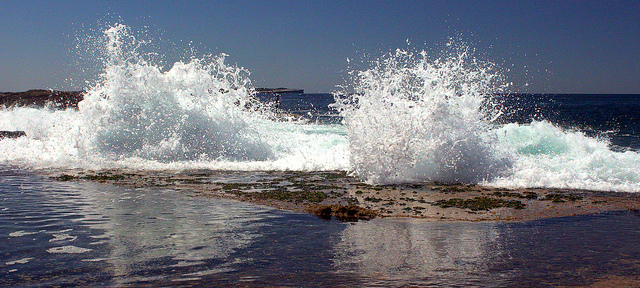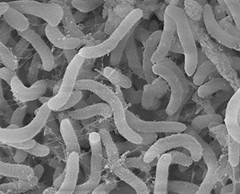Scientists
have discovered just how the “smell of the sea” is produced by a tiny marine organism that is playing a major role in the fight against climate change.
The microbes are so small that about half a million of them can be found in just a teaspoon of seawater.
But they are also so numerous – they are among the most abundant forms of life – that they appear have a significant effect on the Earth’s climate.
Writing in
Nature Microbiology, scientists from the UK, US and China said that the microbe, called Pelagibacterales, were pumping out huge amounts of two kinds of sulphur gas.
“Everyone knows these gases by their smells,” said Professor Steve Giovannoni, a microbiologist at
Oregon State Universityand one of the researche team.
“One of these compounds – dimethylsulfide or DMS – we recognize as the smell of the sea.
“The other gas, methanethiol, makes us think of leaking gas lines. In the atmosphere, DMS oxidizes to sulfuric acid, which some scientists think can seed cloud formation and alter heating of the Earth.”
Clouds are believed to play a significant role in the Earth’s climate as they can reflect sunlight. While they can also act like a blanket, keeping the planet warm, it is thought they have an overall cooling effect. Some scientists have even controversially suggested
creating clouds artificially to help reduce global warming.
Dr Jonathan Todd, of East Anglia University, who also took part in the research, said they had identified the gene involved in production of the gas.
“We studied it at a molecular genetic level to discover exactly how it generates … DMS, which is known for stimulating cloud formation,” he said.
“The resultant DMS gas may then have a role in regulating the climate by increasing cloud droplets that in turn reduce the amount of sunlight hitting the ocean's surface.”
Dr Emily Fowler, also from the Norwich-based university, added: “Excitingly, the way Pelagibacterales generates DMS is via a previously unknown enzyme, and we have found that the same enzyme is present in other hugely abundant marine bacterial species.
“This likely means we have been vastly underestimating the microbial contribution to the production of this important gas.
“This work shows that the Pelagibacterales are likely an important component in climate stability. If we are going to improve models of how DMS impacts climate, we need to consider this organism as a major contributor.”



沒有留言:
張貼留言